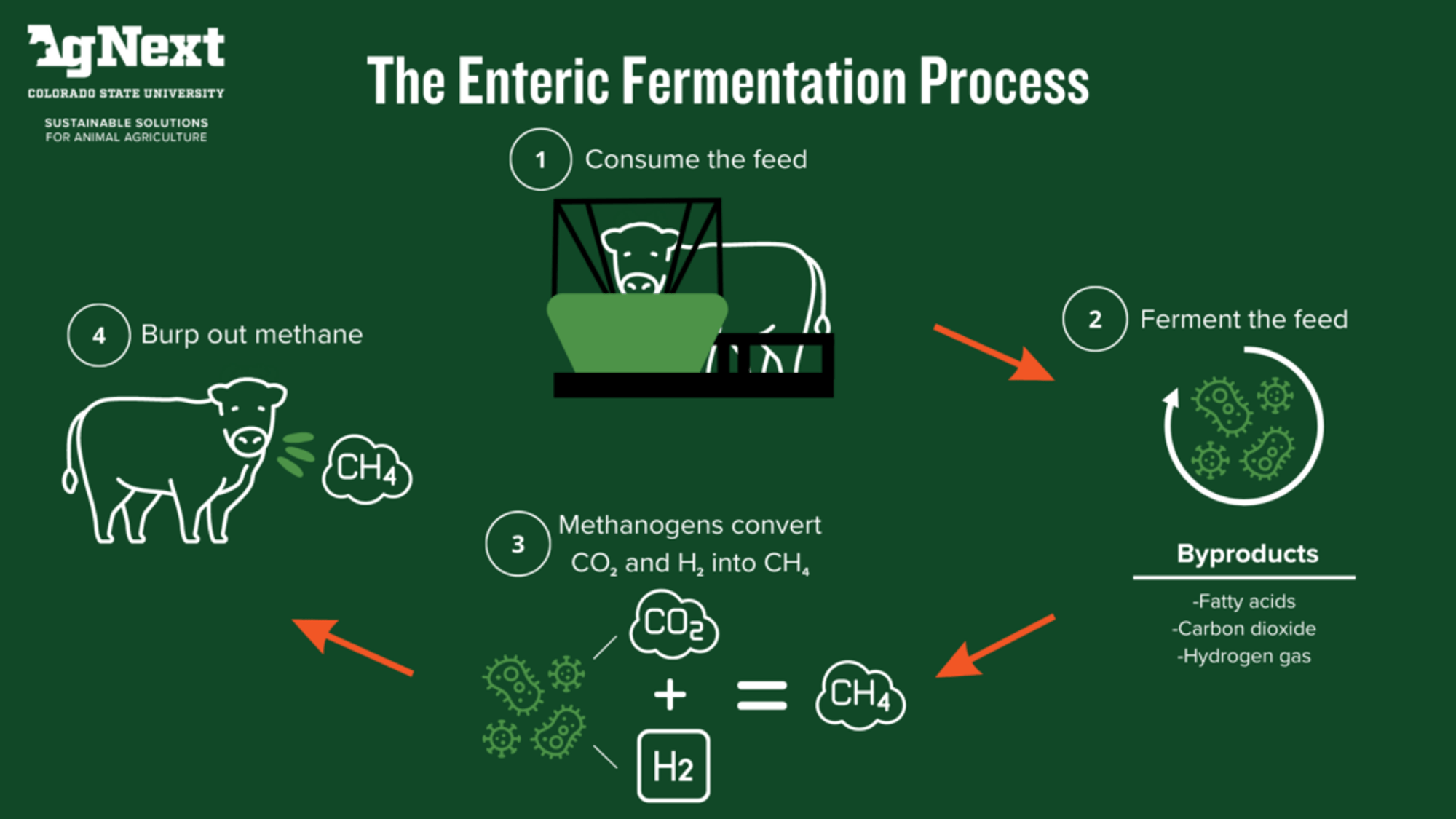What Is Enteric Methane?
The short answer: Enteric methane is methane gas produced by ruminate animals such as cattle, sheep, and other ruminant animals. Methane is a potent, but short-lived, greenhouse gas. It has a Global Warming Potential (GWP) 28 times higher than carbon dioxide. You can learn more about agricultural greenhouse gases here.
- Because methane (CH4) is a highly potent greenhouse gas, it traps heat in the atmosphere more effectively than carbon dioxide.
- But methane is also short-lived, meaning that it does not remain in the atmosphere for long. It dissipates in 10-12 years; carbon dioxide, on the other hand, takes centuries to dissipate. This means that targeting methane emissions for reduction can have a powerful impact in the short term.

The enteric fermentation process in four steps, including consumption, fermentation, methanogen conversion of carbon dioxide and hydrogen into methane, and cows burping out gas. Graphic courtesy of CSU AgNext.
In animal agriculture, it’s important to study methane because it is the number one source of greenhouse gas emissions from animal agriculture production.
- Methane is produced by rumen, or gut, microbes.
- Specific microbes called methanogens within the ruminant’s microbiome feed off the byproducts of fermentation that happens in the rumen as it digests feed.
- Byproducts of fermentation include fatty acids, carbon dioxide, and hydrogen. As fermentation takes place, the methanogens ingest feed byproducts and release methane.
Break it down: Since methane is produce from fermented feed, the amount of methane produced is closely tied to the feed intake the animals receive.
- Researchers are looking for ways to decrease methane emissions and make animal production more efficient.
- Some options to do this include changing the animal’s diet to decrease fermentation byproducts on which methanogens can feed, or using feed additives to prevent excess methane production.
One way to change diets to make them more energy efficient is through feeding ruminants more grain or carbohydrates.
- This prevents the animals from producing more hydrogen within the microbiome, therefore lessening the concentration of methane.
- The less energy that is lost as methane, the more energy the animal can convert to weight gain.
While altering feed intake is a major way we can reduce methane emissions in cattle, there are many more methods in development that could help.
- For example, researchers at Colorado State University AgNext are studying possible genetic methods to decrease methane emissions.
- By selecting for cattle that are more energy efficient and naturally produce less methane, we can help decrease overall methane emissions.
In short: It’s important to understand that methane emissions in the beef and dairy industries will never reach zero, but research and implementation can result in a reduction of greenhouse gas emissions from the beef and dairy industry. Targeting enteric methane emissions through feed additives, improved diet formulations, and genetic selection for animals that naturally produce less methane is an excellent way to create more sustainable food production.
Photo by David Dolenc on Unsplash.








